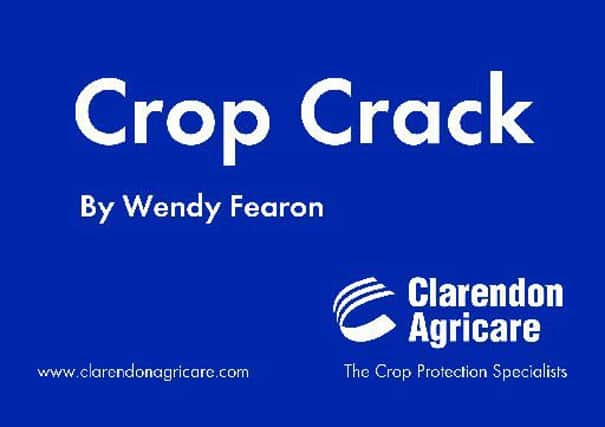Don't stretch spray intervals


Combines have been busy this week and a large acreage of grass cut for fodder.
I would urge all farmers to assess both land intended for reseeding and winter cereals to monitor for slugs as numbers are greater than they have been for some years. Treated seed is a priority if slugs are present.
Advertisement
Hide AdAdvertisement
Hide AdI would like to impress on you the need to carry out soil samples at this time to ensure all nutrients will be readily available to the growing crop.
Grassland Weed Control
Ragwort is appearing in many grass situations at present and is becoming a greater problem especially in lower fertility situations; it is an ‘injurious weed’ and is not permitted to grow unchecked. Ragwort is a biennial plant i.e. it grows from seed the first season to produce a rosette plant and then the following season it will produce a flowering stem, produce seed then die.
Ragwort contains alkaloids which are poisonous to all livestock. Each plant can produce up to 150,000 seed with a 70% germination rate and seeds can remain dormant in the soil for up to 20 years. Treatment of plants, which are at the rosette stage now, can be very effective and an autumn application allows a check on the efficacy of the treatment to be made in early spring before allocating fields for silage or hay. Autumn is a good time to spray as the grass growth slows down and grass utilization and withdrawal periods are not as critical as they can be in the spring time when stock are turned out.
Whilst ragwort is unpalatable when it is green it becomes extremely palatable once sprayed. It is important to remove as much of the root as possible; ragwort can regenerate like docks from its root fragments. A single application of weed killer is unlikely to completely eliminate a ragwort infestation due to overlapping generations of the weed. A follow up treatment should be made in the spring.
Advertisement
Hide AdAdvertisement
Hide AdDocks are a particular problem in intensively managed grassland, especially where seeds are spread through slurry applications or poaching has occurred. Docks look unsightly, but more importantly, can reduce the grass yield and productivity.
Early autumn is often overlooked as a potential time to achieve effective dock control. At this time the dock plant will revert back to vegetative growth. During vegetative growth the plant food being produced in the leaf is moved into the root for storage. Translocated herbicides are moved through the plant along with the food, hence if they are applied at this stage more product will end up in the root giving better root control.
Where clover is not considered important sprays based on the chemicals fluroxypyr, triclopyr (DOXSTAR) may be applied to control both chickweed and docks. Where ragwort is also present FOREFRONT is the best option. If clovers are an important component of the sward Squire may be used to control docks. Remember in most circumstances treatment is most effective where a second application takes place within a 12-month period.
Potatoes
Growers should continue to maintain fungicide protection of the haulm until the crop is harvested or the haulm is 100% desiccated. Timely desiccation is an essential part of good seed and ware production. Diquat is the most widely used farmer applied chemical desiccant.
Advertisement
Hide AdAdvertisement
Hide AdThe rate of haulm desiccation is slow and therefore fungicide protection should continue after application. Even after two split applications of Reglone certain varieties of potatoes are difficult to burn off completely and be certain no regrowth will appear.
Spotlight Plus is a desiccant recommended for use after a seven-day interval as a follow up T2 treatment to the T1 application of Reglone and gives complete kill of any stems remaining and stolons below the ground but it is poor on leaves.